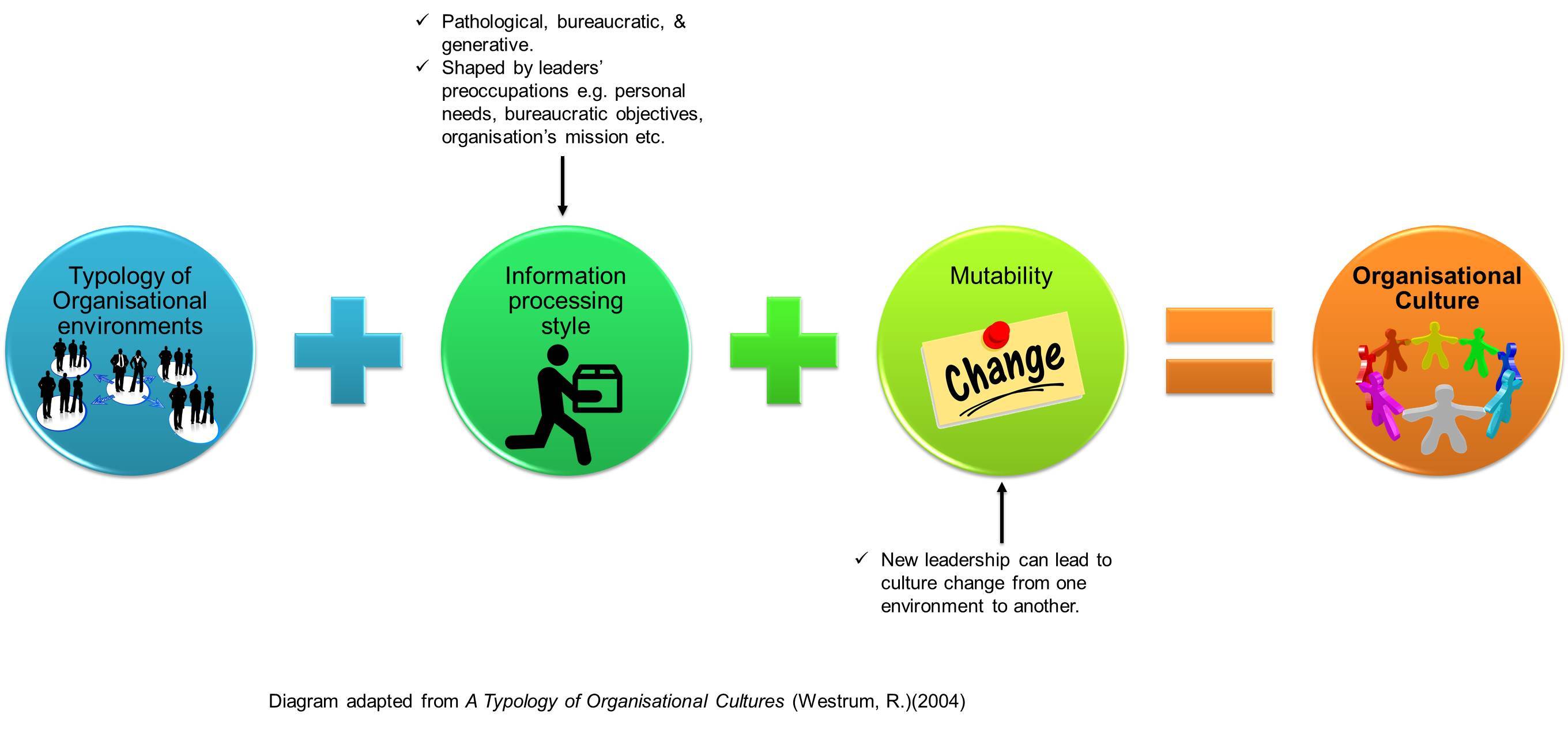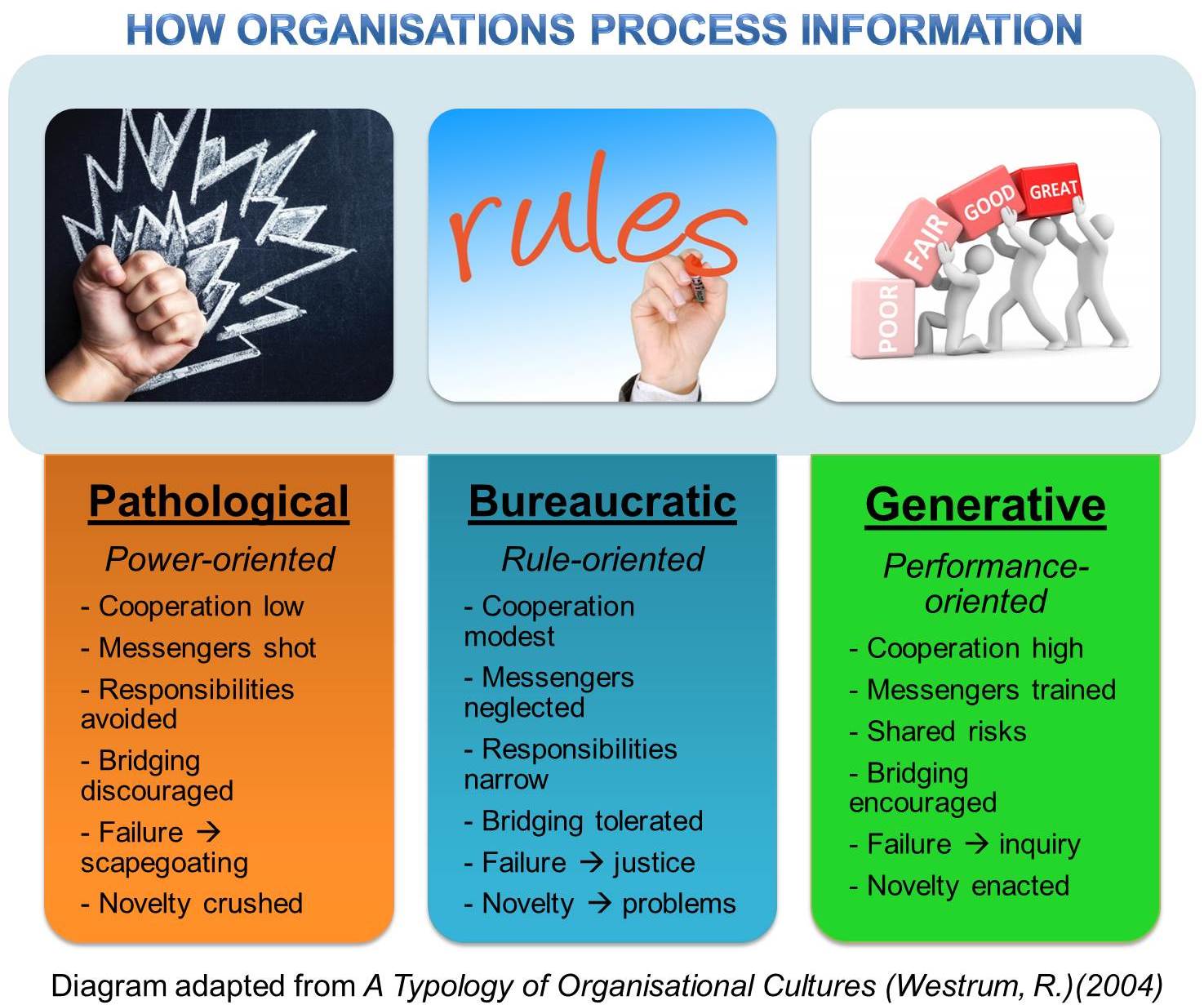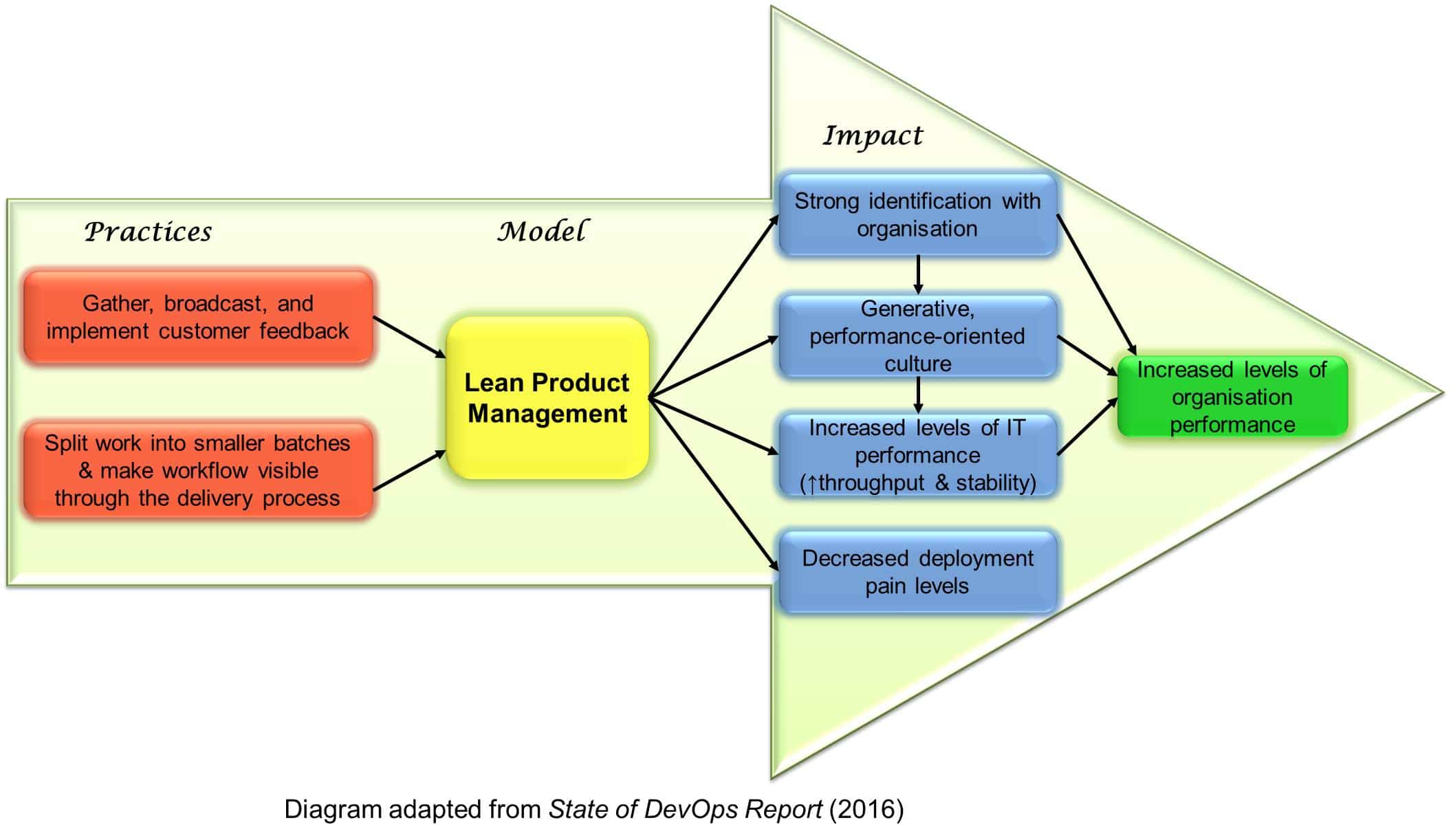
As explored in previous lectures, the culture within the organization is the foundation of its efficiency and functionality. Without an optimized organizational culture, all other aspects will fall flat, past errors may be repeated, and effectively moving forward towards increased success will be hindered.
In this lecture, we will discuss the various types of organizational cultures, namely:
- Pathological: negative, and power-oriented.
- Bureaucratic: negative, and rule-oriented.
- Generative: positive, and performance-oriented.
How these cultures are created will be discussed and their effect on the organization – whether negative or positive – will be scrutinized.
Three Cultures Model
Ron Westrum, an American sociologist, defined organizational cultures as:
“…[an organizational] culture is the organization's pattern of response to the problems and opportunities it encounters”.
He identified three predominant cultures noticed within organizational settings, as mentioned above: pathological, bureaucratic, and generative. Each culture is driven by multiple factors including the priorities of the organizations leaders, which causes a response from the organizations workforce. These two factors combined create the organization culture.
It is imperative to note that the culture created within an organization dictates how that organization will respond to any problems it may encounter. Negatively impacting cultures, such as pathological or bureaucratic cultures, hinder the flow and processing of information across the various areas of the organization.
A pathological culture, for example, focuses on the leader’s personal interests and resources. The information is, thus, processed in a way to further or advance particular parties within the organization rather than benefit the organization as a whole i.e. power-oriented.
A bureaucratic culture will focus on the use of standard channels and procedures to process information through the various organizational areas. Whilst seemingly innocent, this becomes problematic and insufficient when having to deal with problems or crises encountered by the organization i.e. rule-oriented.
Contrary to both of these, a generative culture tends to be more proactive, focusing on getting the information to the correct people and organizational areas by any means required. In generative cultures, the leader places emphasis on accomplishing the organizations goals and missions timeously, rather than on personal gain or rules i.e. performance-oriented.
The way information is handled and processed, thus, determines the culture that will be formed within an organization. Wherever the emphasis is placed by the leader’s of the organization – whether it be on personal needs, rules, or performance – will affect the processing of information and alter the functionality of the organization. A generative culture is the most successful in maintaining a highly functioning organization with increased success. This was briefly addressed in the first lecture in our Modern IT Management lecture series focusing on the business and IT partnership.
The three culture model is illustrated in the diagram below.

It is important to change leadership such that the goals of the organization are prioritized so that a culture is created that is pro-active, generative, and furthers the progress of the organizations success.
Lean Product Management
Culture within an organisation is highly mutable and changeable. Changes in frameworks, information processing, and leadership can lead to a positive culture shift from a negative cultural type to a positive, beneficial one such as a generative organisational culture.
Factors that can facilitate this change in culture have been identified and are, namely:
- Splitting work into smaller batches to be processed and completed by teams. This ensures faster processing and release of the information and the use of minimum viable products.
- Ensuring that these teams have a good understanding of the flow of the information/work from the organisation to the customers and allowing them visibility to this flow.
- Organisations must actively and frequently request customer feedback with regards to their products and product design.
Working on the aforementioned factors will enable a cultural shift by improving Lean product management and improving the organisational culture, making it more generative.
This process, and its impact, is illustrated in the diagram below.
Conclusion
Organizational culture is imperative for the success of an organization and the effective and efficient functioning of the teams within it. This shift in cultural types will improve the organization culture and, in the long-term, improve the functionality of the organization by optimizing information processing and efficiency.
References
Westrum, R., 2004. A typology of organisational cultures. Quality of Safe Health Care, Volume 13, pp. 22-27.
Previous Post |
Next post |
The impact of culture |
Changing the organisation |
